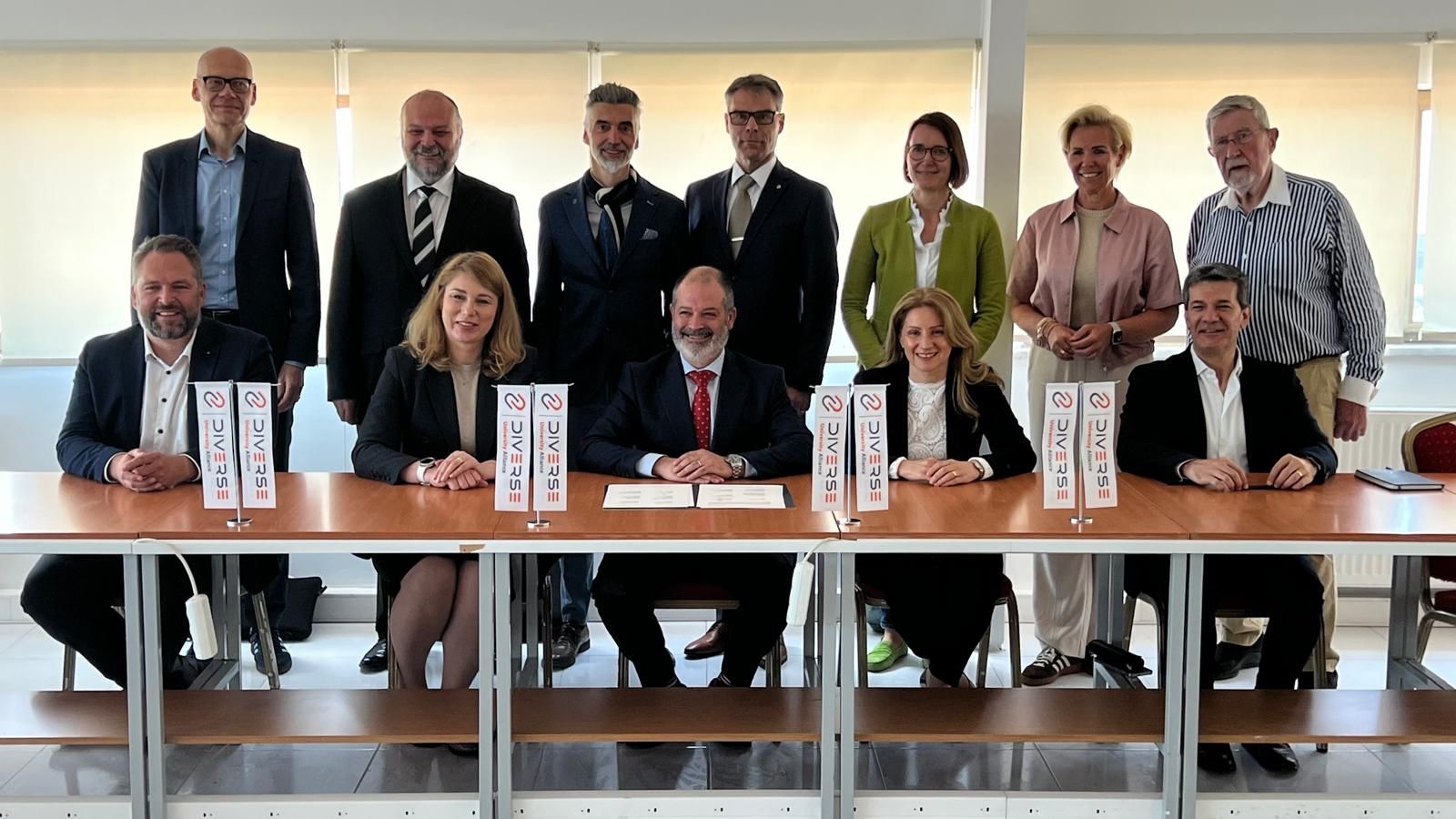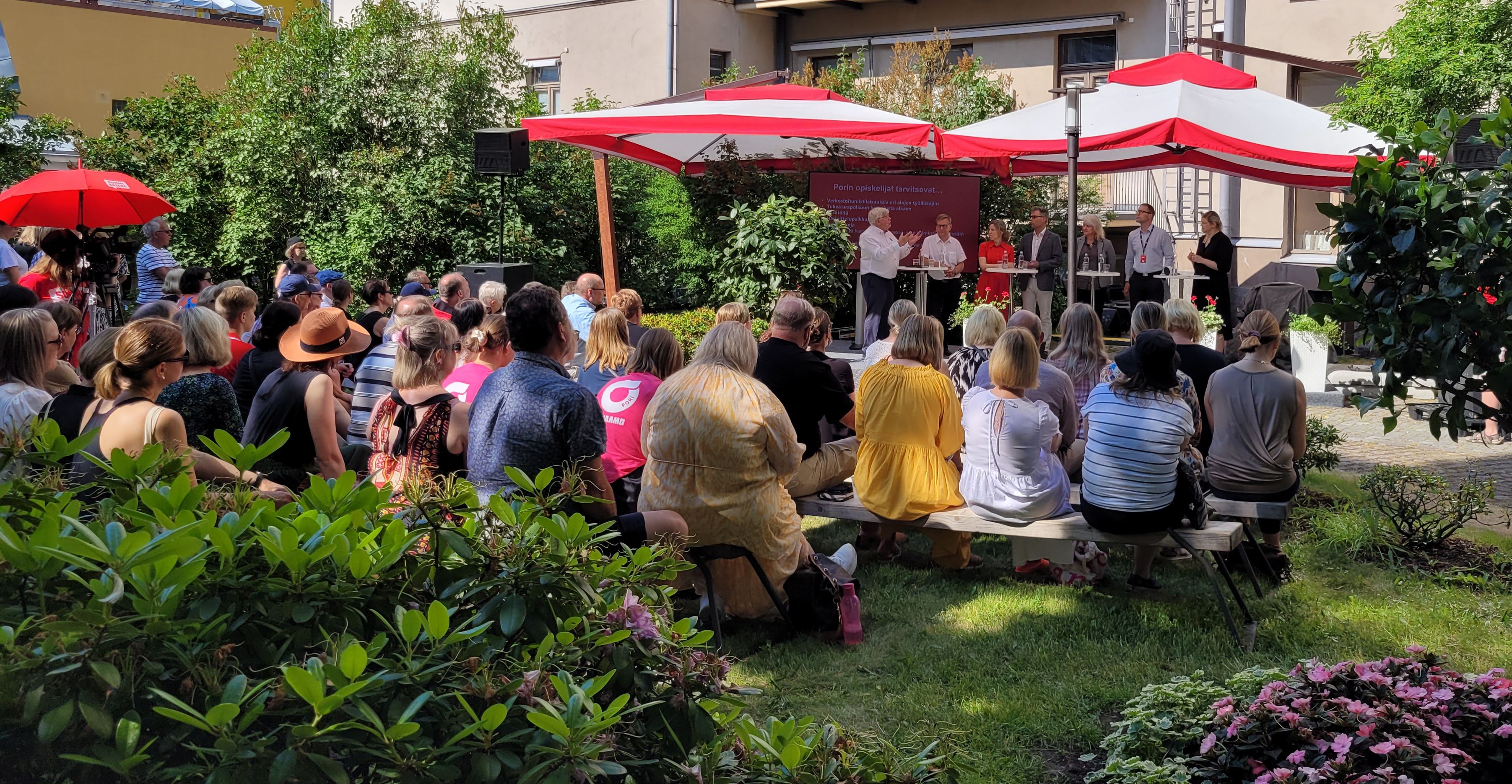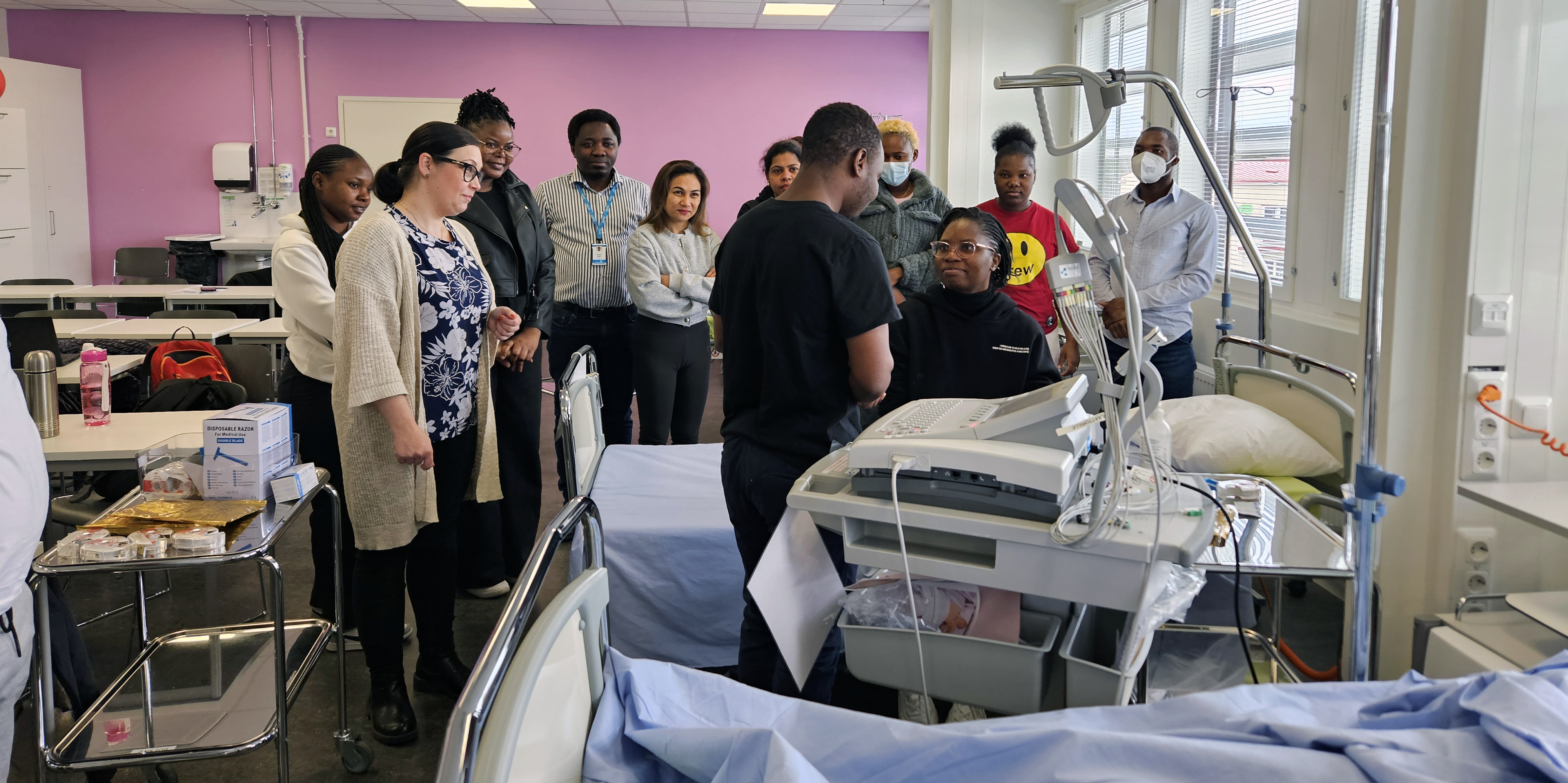Advancements in urban stormwater management in the Baltic Sea region
Challenges caused by climate change and urban densification will demand more attention and measures in the future. Experts in the Baltic Sea region have developed a planning support solution to mitigate the pluvial flood risks of urban areas.
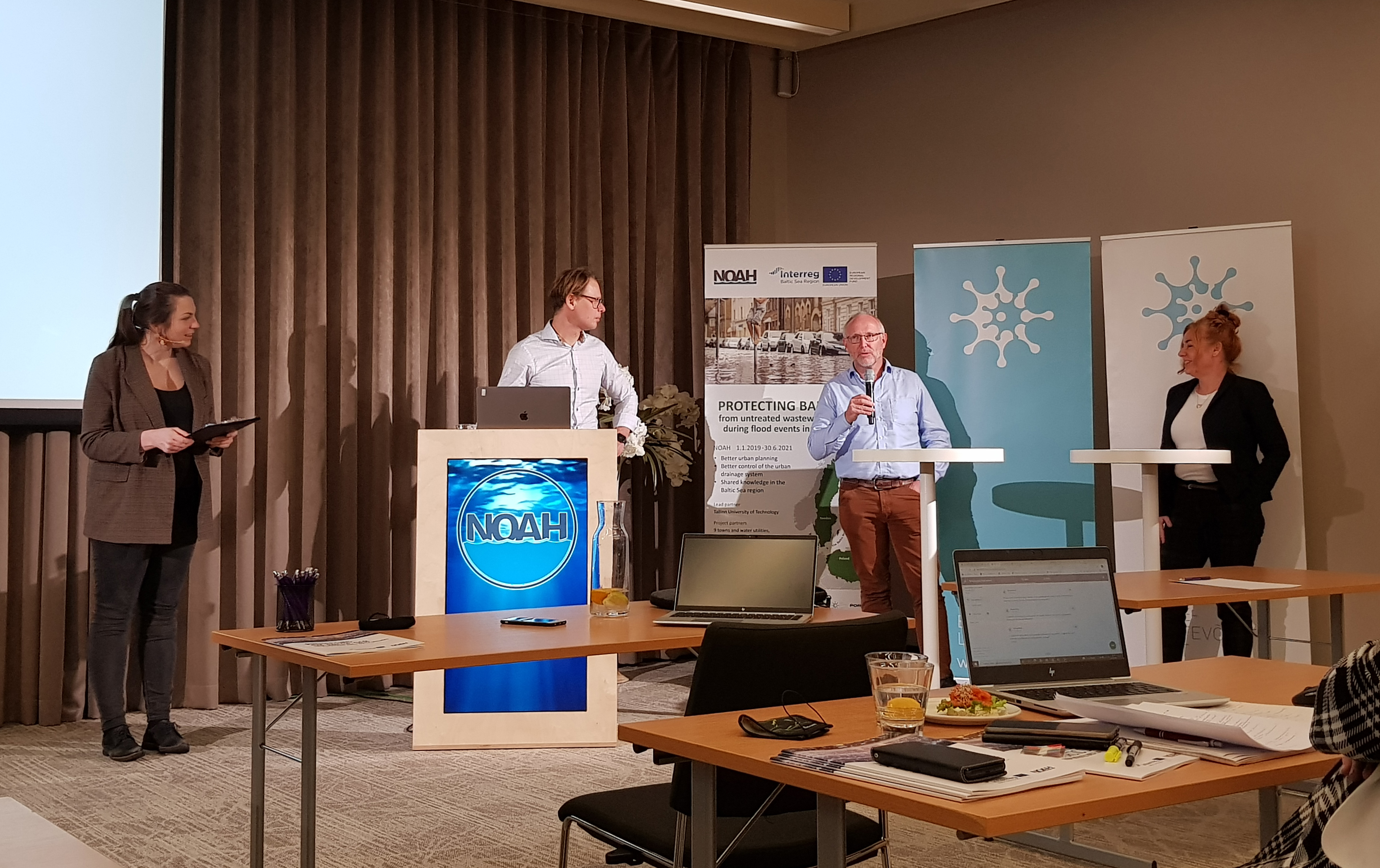
NOAH experts Nils Kändler (Tallinn University of Technology), Peter Steen Mikkelsen (Technical University of Denmark) and Magdalena Gajewska (Gdańsk University of Technology) at the Q&A session in the NOAH final seminar.
Effective management of urban stormwaters is one key factor among environmental solutions in the future. Due to the weather extremes brought about by climate change, floods are becoming more frequent, especially in urban areas. As the capacity of urban drainage systems may be insufficient in extreme rainfall situations, the risk of untreated wastewater being flushed into the nature, including the Baltic Sea, increases. Wastewater spillages are harmful to people and the environment due to the excessive amount of nutrients, hazardous substances, and pathogenic microbes.
Support system for planning smart drainage systems
Urban areas can be prepared for the excessive rainwater volumes by improved planning and risk analysis. A partnership of universities, research institutions, municipalities, water utilities and associations from six countries around the Baltic Sea have worked for flood risk mitigation in the BSR NOAH project in 2019-2021. The experts in the project have taken measures and developed new tools for urban stormwater management.
In NOAH, eight pilot areas have been chosen for testing and implementing control measures, monitoring tools and planning methods in real urban environments. Models of the areas have been created for conducting flood risk analyses. Based on the knowledge gained by modeling, appropriate locations have been chosen for the installation of monitoring and control devices which enhance the drainage system’s efficiency. Furthermore, to enhance spatial planning, a new methodology for investigating the areas’ flood risks – whether currently or in the future according to selected climate scenarios – has been created. The NOAH tool, Extreme Weather Layer (EWL), combines stormwater management with spatial planning to provide information on how to make the existing facilities resilient to the impacts of climate change.
In Finland, NOAH actions have been carried out by three project partner organizations: the Satakunta University of Applied Sciences (SAMK), the city of Pori and Natural Resources Institute Finland (Luke). SAMK has planned and executed NOAH project communication and led the actions for creating visibility for the project. Activities for stakeholder involvement have been implemented in the Satakunta region, in Finland and in the entire Baltic Sea region. The representatives of the city of Pori have participated the project in an expert role, gaining new information on stormwater management and sharing their knowledge on river flood control. Pori has also been one of the NOAH pilot areas – flood risks in the Suntinoja ditch catchment area have been analyzed with the possibilities of modeling, and the project’s EWL tool has been tested as part of improving the processes of spatial planning in the area. Luke has worked with water analyses as the effects of project installations have been investigated in all eight NOAH pilot sites in the Baltic Sea region.
Benefits for the entire Baltic Sea region
Implementation of the NOAH actions and tools can cut up to half of the inflow of pollutants from urban areas into the Baltic Sea. During the project lifespan, the EWL planning solution has been tested and adapted to the urban planning procedure of the partner cities. The NOAH concept is easily scalable to any urban area around the Baltic Sea. The aim is to anchor the climate-aware planning into the daily practices of towns and water utilities, to mitigate impacts of climate change, and to transnationally protect the Baltic Sea.
Contacts:
Project coordinator, Ivar Annus
Tallinn University of Technology, Estonia
E-mail: ivar.annus@taltech.ee Project communication manager, Hanna Rissanen
Satakunta University of Applied Sciences, Finland
E-mail: hanna.rissanen@samk.fi 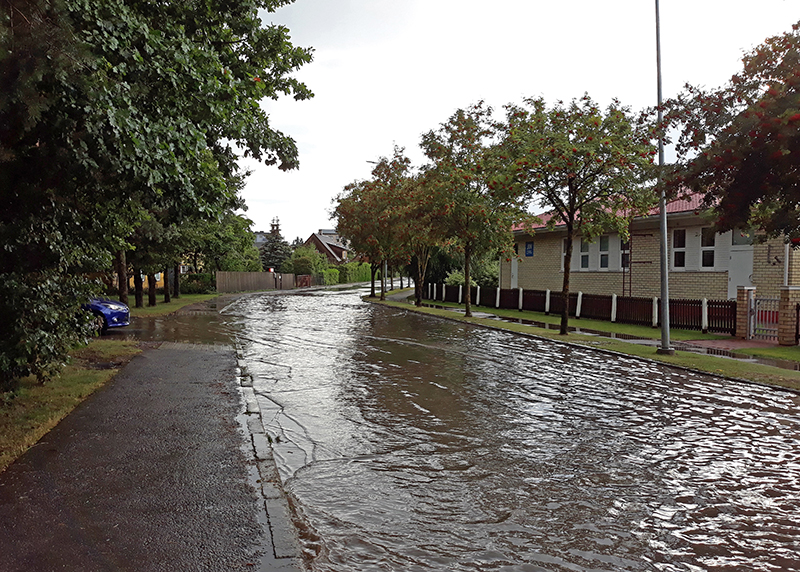
Interreg Baltic Sea Region NOAH project
- NOAH “Protecting Baltic Sea from untreated wastewater spillages during flood events in urban areas”,
- Funded by the Interreg Baltic Sea Region Programme
- 18 partners from six countries, led by Tallinn University of Technology
- 1 January 2019 – 31 December 2021
- Project website
- Handbook of the NOAH concept
